PESHAWAR, May 02 (APP): In a rapidly evolving world where social, political and economic landscapes are being reshaped, women are stepping forward to challenge the entrenched norms that once confined them to the margins through education.
From classrooms to beauty parlors and civil service to education, Pakistani women are making transformative strides—reshaping not just their destinies but that of their communities and country.
Though developing nations like Pakistan have made significant progress toward gender equality, disparities still persist in KP, driven by deeply rooted socio-cultural taboos and structural challenges.
According to the World Economic Forum’s Global Gender Gap Report 2024, no country has yet achieved full gender parity—but the tide is turning due to mushroom growth of information technology and online education.
Sundas Amin, a 34-year-old lecturer of Statistics at Govt College Pabbi Nowshera exemplified the changing narrative and shined in her community.
Hailing from a conservative village of Bannu district where educating girls was not a priority due to socio-cultural barriers, she earned an MSc degree in Statistics from the University of Peshawar with distinction despite these odds and contributed positively towards girls education.
“After my father passed away, we faced immense financial hardship. My mother and I migrated from a remote village in Bannu district to Warsak Road in pursuit of higher education to address our financial woes,” Ms. Sundas recalled. Her hard work bore fruit when she qualified the KP Public Service Commission examination and secured her teaching post.
Sundas’s journey is a testament to how education can empower women and uplift entire families—changing the course of their futures.
Similarly, Jiya Ali, a 32-year-old entrepreneur, turned rejection into opportunity. “After failing to secure a government job, I opened a beauty parlor in 2014,” said Jiya, who now earns Rs30,000 per bridal makeup session. “With support from my husband, I’ve built a thriving business.”
Her ambitions don’t end there. Jiya now plans to open a beauty parlor school in Nowshera City, aiming to equip more women with the skills to earn independently.
“Education for a girl should come first. That’s the only way to make your mark,” she advised aspiring women entrepreneurs.
Despite success stories like those of Sundas and Jiya, female participation in the government sector in KP remains low due to lack of education and sociocultural barriers.
Dr. Muhammad Naeem, former Chairman of the Economics Department at the University of Peshawar, said that gender disparity in public sector jobs stems from institutional and societal constraints besides poverty and unemployment.
“In most areas of KP, especially erstwhile FATA, cultural norms often dictate that women stay home or marry at early age.
This mindset, coupled with limited access to education and technical training, restricts women’s employment options,” he said. Red tapism, lack of mentorship, and gender bias in promotions further dampen women’s career progression.
According to the Pakistan Public Administration Research Centre (PPARC), women constitute only 49,508 out of over 1.2 million federal government employees—a mere 6.09% increase from last year.
Despite a 10% quota for women in civil services, real gains remain elusive, particularly in conservative regions like KP and Balochistan.
Acknowledging the problem, Dr. Riffat Sardar, Chairperson of the KP Commission on the Status of Women, highlighted key reforms including the National Gender Policy (2002), Women’s Empowerment Package (2017), and increased BISP stipends to support women-led households in education and health.
She said 4th Bint-e-Hawa Achievement Awards has been announced, recognizing women’s contributions in 12 different fields, with over 7,000 applications received nationwide.
Education Minister Faisal Tarkai maintained that the government is prioritizing female education in its new education development plan for year 2025-26.
“Seventy percent of newly established schools would be constructed for girls. This year, Rs326 billion has been allocated to education development in KP, including the creation of 59 girls’ schools and the upgrade of 150 existing institutions while recruiting for female teachers through ETEA are underway in KP,” he said.
Ikhtiar Wali Khan, Prime Minister’s coordinator for information and KP Affairs, emphasized the need to expand digital and distance learning opportunities for girls in remote regions of Pakistan.
He argued that the root cause of the gender gap in government employment lied in the lack of access to higher education for girls, particularly in rural and tribal areas of our province that needed to be countered through online education.
“The gender gap begins with primary education,” he said, claiming that about 4.7 million students aged five to 16 remain out of school in KP while most of public universities including University of Peshawar are facing financial crisis.
Many universities in KP are unable to attract top-tier educators due to uncompetitive salaries and poor working conditions. This has led to an increase in adjunct faculty, who may not always possess the necessary expertise or commitment to ensure high-quality teaching.
Consequently, students are deprived of the mentorship and knowledge needed to excel in their respective fields.
Additionally, he said the lack of continuous professional development for existing faculty members in KP limits their ability to keep up with evolving teaching methodologies and research advancements.
This stagnation undermines the effectiveness of higher education in the region and reduces the prospects for innovation and academic growth in KP.
The recent dismal performance of candidates in various competitive examinations in KP speaks volumes of the deteriorating standards of higher education in our province’s universities.
Not a single candidate from the lawyer’s quota has passed the last year’s examination for additional sessions judges and only nine candidates qualified for the 80 seats of civil judges.
Out of the 598 candidates, 139 did not pass the English part and that only 408 candidates out of 28,024, a mere 2.96%, passed the written CSS exam.
However, the success of women like Sundas Amin and Jiya Ali reflected a hope and broader trend of aspirations for girls of KP. With continued investment in education, economic opportunities, and inclusive policies, KP can harness the full potential of its women—breaking the shackles of disparity and ushering in a more equitable future.
